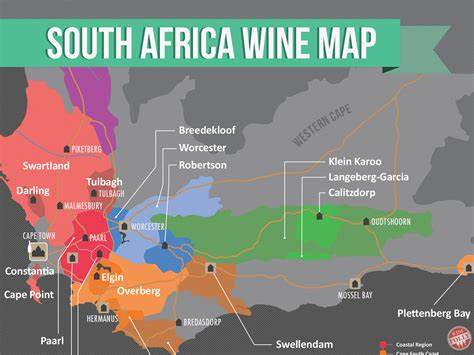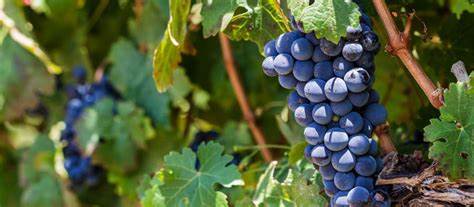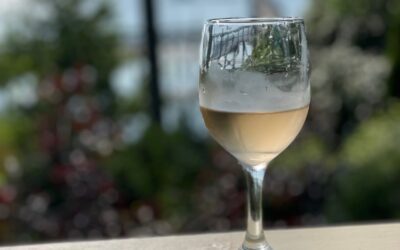South Africa has a very long and turbulent history as far as wine goes…much less linear than most of Europe and much older than most of the New World regions. I find it fascinating and the diversity of grapes and the stories behind them intrigue me. I’m preparing for a Wine Tour Through South Africa event at Grippy Tannins in Portland, Maine this Wednesday, May 15th and as I was doing some research for my presentation, I came across facts I did not know about the special grape unique to South Africa – Pinotage.
First, a little history about South African wines.
Although wine grapes are not native to this warm, Mediterranean climate region, they have proved to grow quite well. The first vines were planted in 1656 and the first press was on February 2, 1659. Members of the Dutch East Indies Company are responsible for the first vineyards, as they created a stopover and refreshment station at the Cape of Good Hope for their ships headed on the trade routes between Europe and Southeast Asia. The first vines were cuttings brought from Europe and in the next century as the French Huguenots settled in South Africa, they brought over even more French varieties. It is no surprise that Chenin Banc, the versatile workhouse of French white grape varieties, is the most planted in South Africa.
In 1886 phylloxera devasted the vines of South Africa as it did throughout Europe. Wine growers resorted to grafting vines onto North American rootstock, which is resistant to the louse. The wine industry chugged along, mostly making easy drinking bulk wine to the exported and not making a very big name for the region. In 1973 the Wine of Origin scheme, which designated specific wine regions for labeling purposes, much like the American Viticultural Area system in the US, was started to help improve the country’s image.

The isolation and trade restrictions of Apartheid, which ended in 1994, kept the industry down, but things started to progress as the country opened up and wine tourism became more important. Restrictions on making, purchasing, and exporting wine that were instigated on and off during the pandemic, as well as a long stretch of drought, have not helped the industry. But a new campaign called #savesawine and more exposure in the world marketplace are making for a hopeful future for South African wines.
On to Pinotage….
In 1925 Pinotage was created by a Stellenbosch University viticulture Professor Abraham Perold by crossing the Pinot Noir grape with Cinsault. It gets its name because back then the Cinsault grape, which is a warm climate black variety from the southern regions of France, was referred to as Hermitage (alluding to the Northern Rhone appellation.) Pinot Noir is a lovely but changing to grow variety, and not suited to warm climates like South Africa. By crossing the two he hoped to bring the best of the Pinot Noir grape to a wine while allowing the grape to be somewhat hearty in the African climate.

Pinotage was not an instant success. It wasn’t grown commercially until 1943, and the first varietal bottling was for the 1959 vintage. By 1990 it only accounted for less than 3% of total vines. In the late 50s some of the wines achieved acclaim, some of which c=had considerable ageing capacity too. But in fact, for most of its history, Pinotage has had a bad reputation. It was often made in not a very high-quality way, had the distinct aroma of “burnt tires”, quite off putting to say the least, and the taste was sometimes compared to “rusty nails”.
Also, in a country where the wines have a historical European flair, especially with a nod to France, this unusual “New World” style wine was not winning over many winemakers.
Then there was a Pinotage renaissance in the early 2000s. From 2007 on, the quality, demand, and supply of Pinotage grew significantly. Pinotage now makes up 7.2 percent of vineyards. Since 2001, domestic sales increased from 3 million liters to 5 million, while exports surged from over 8 million liters a year to close on 19 million. Part of this is an improvement in the style that has made it a more desirable style of wine. Although Pinotage is a cross between two grapes that produce lighter red wines, winemakers used to treat it more like Cabernet, with heavy extraction and lots of oak. The “new” style of Pinotage is much more elegant, approachable, using a lighter hand with oak and creating wines that reflect the unique terroir of South Africa.

Join me Wednesday to try one yourself – Lindsey’s choice for us is a Longridge Pinotage 2016 from Simonsberg-Stellenbosch. These grapes are organic and biodynamic and hand harvested. Fermented in stainless steel using indigenous yeast, the wine is then matured in a combination of new and matured French oak barrels for 16 months.
Winemaker’s notes: “Stylistically we focus on the fruit and characteristics of the Pinot Noir. An elegant, well rounded wine with soft juicy tannins, the nose offers sweet spices, cassis and ripe berries, sugared orange peel, rooibos and a smoky savory character which follows through onto the palate, with a long and lingering aftertaste.”
Join me at Grippy Tannins A Wine Tour Through South Africa Tickets, Wed, May 17, 2023 at 6:00 PM | Eventbrite



